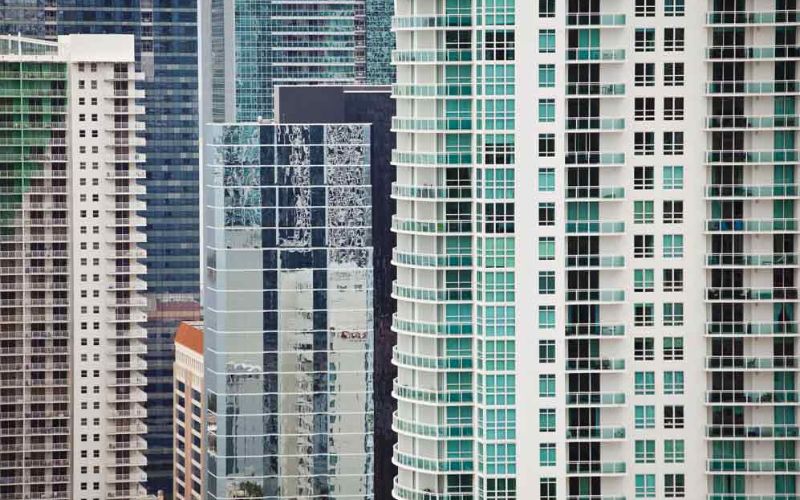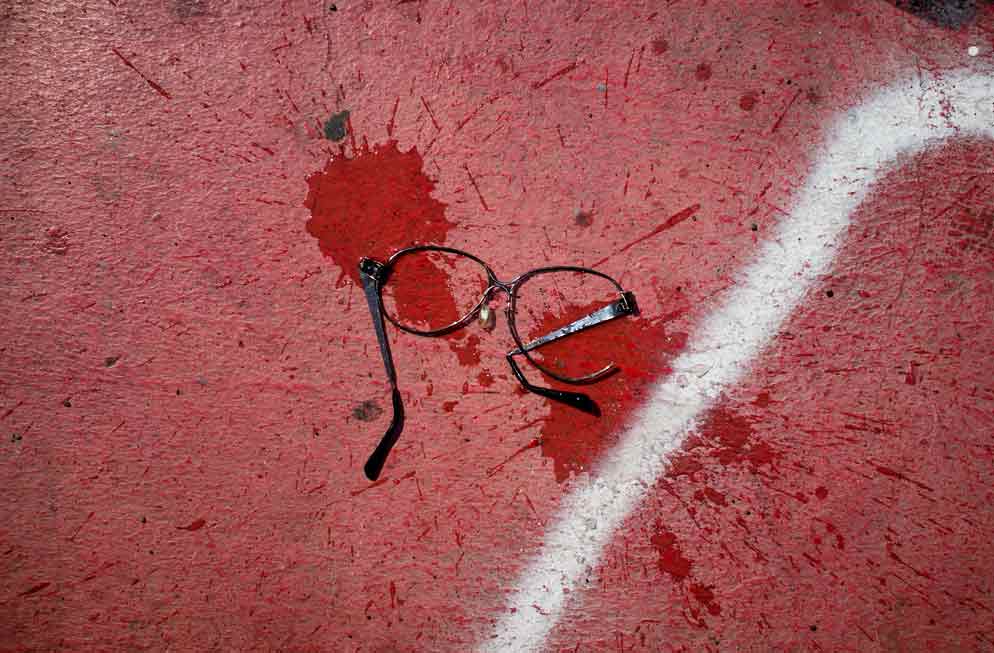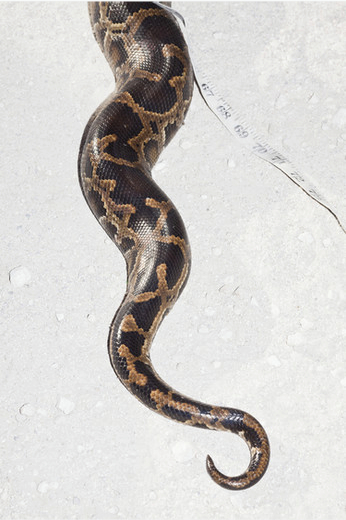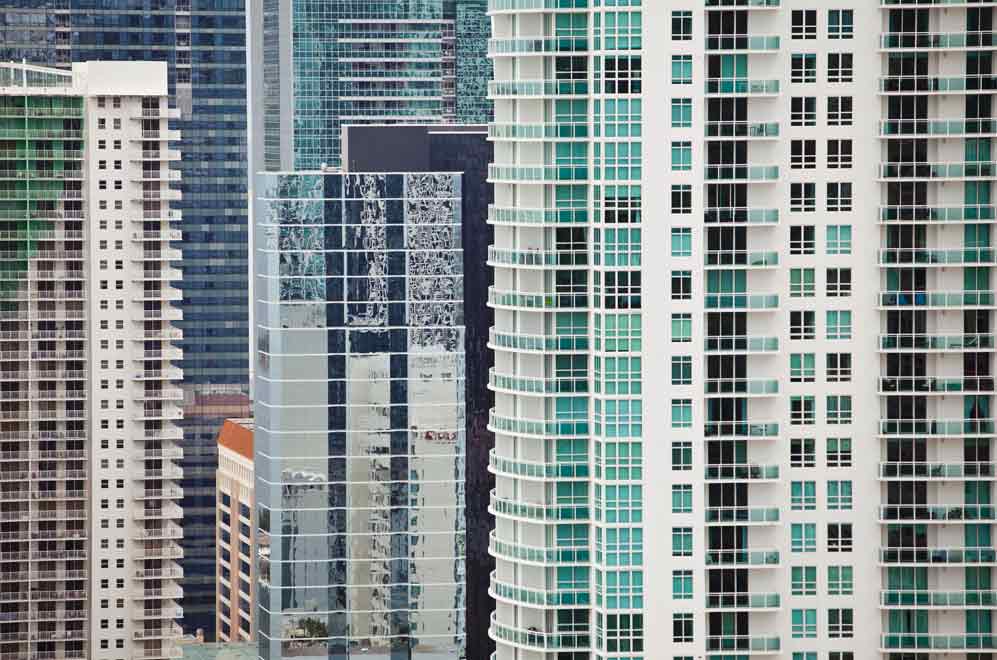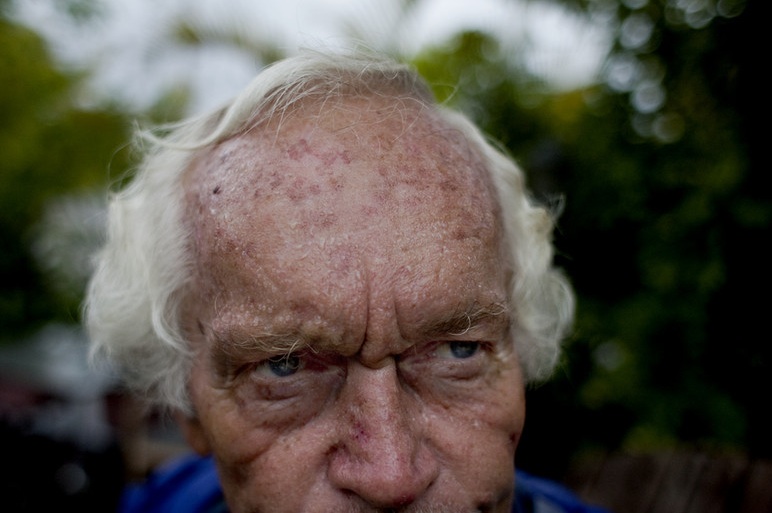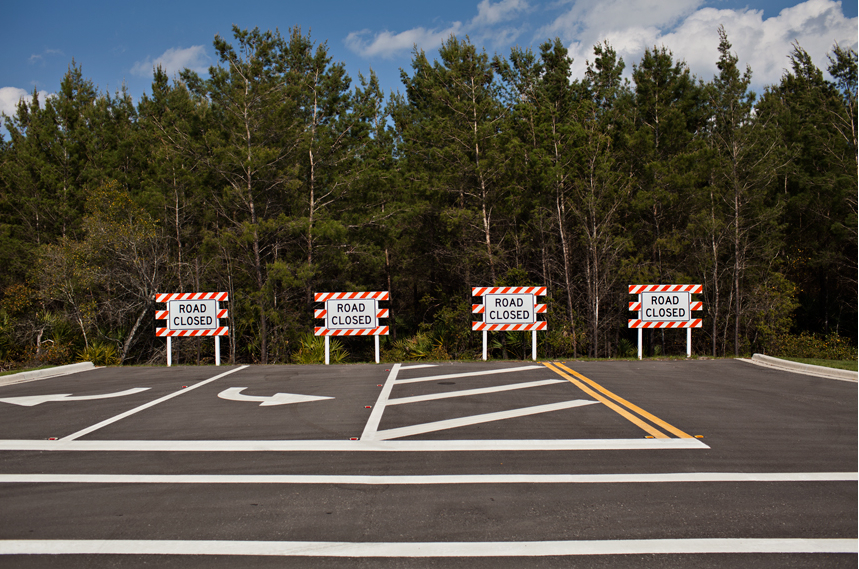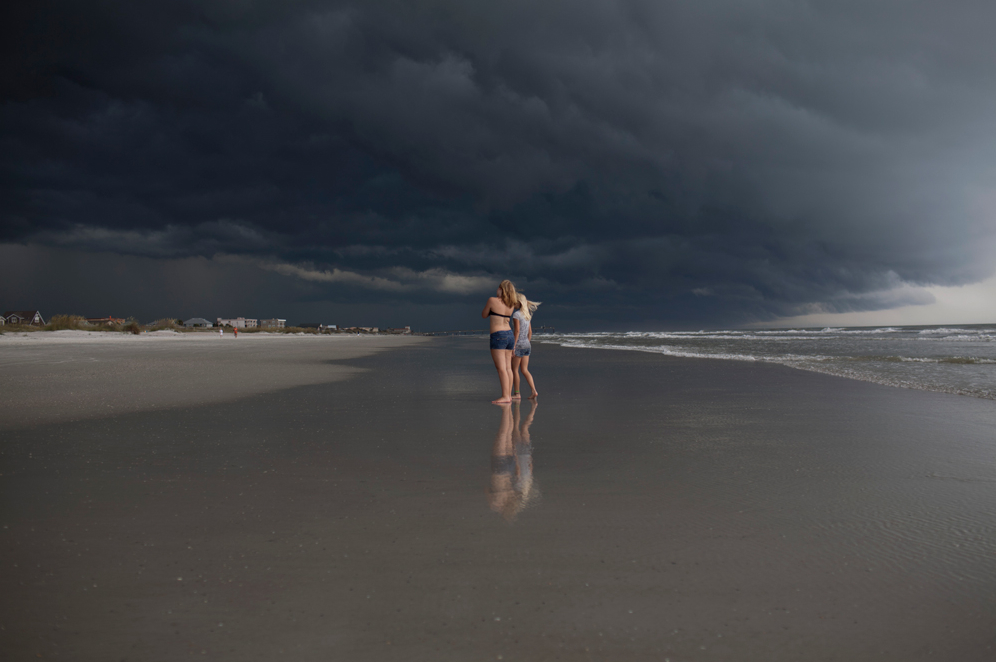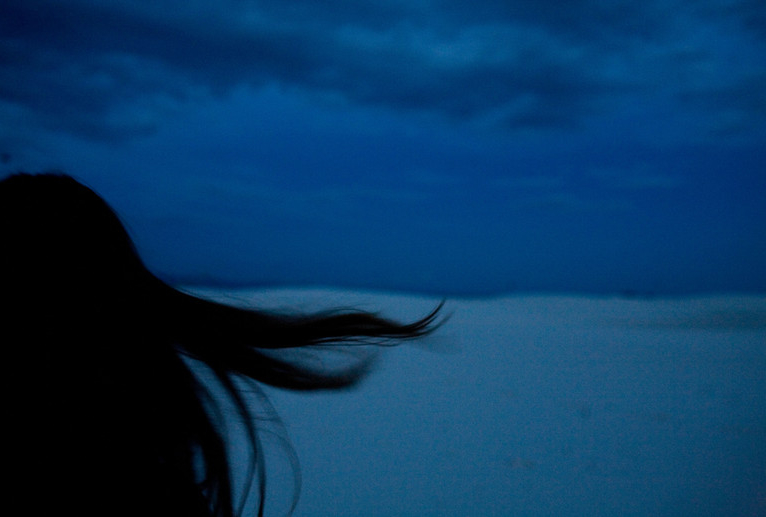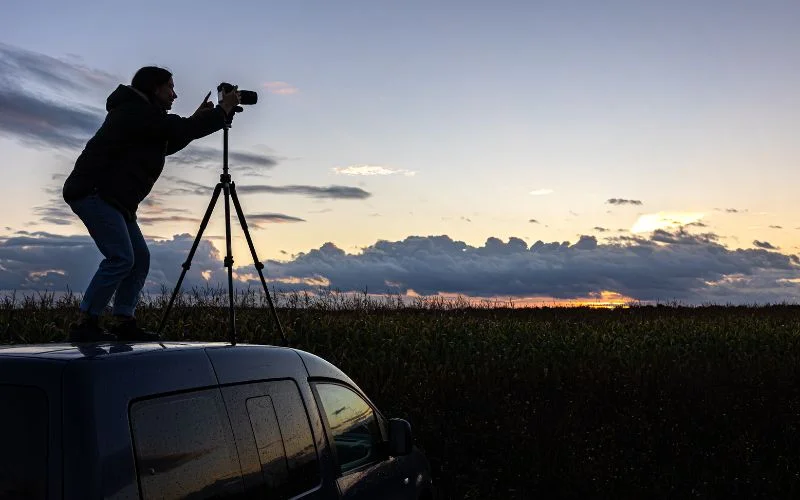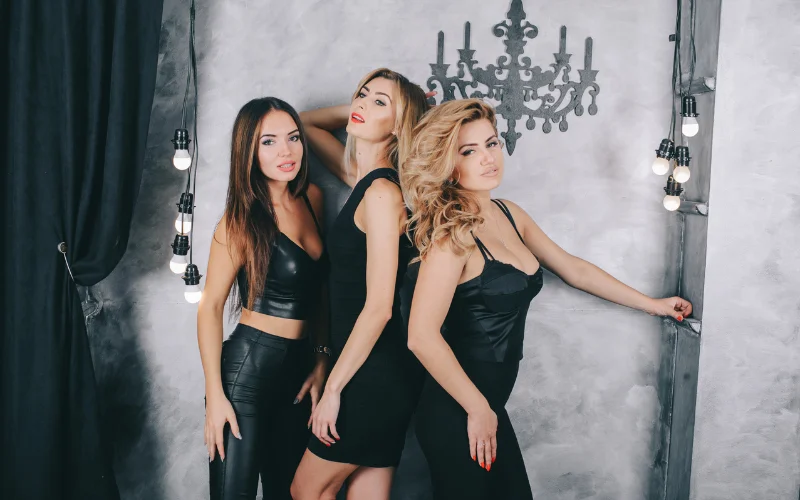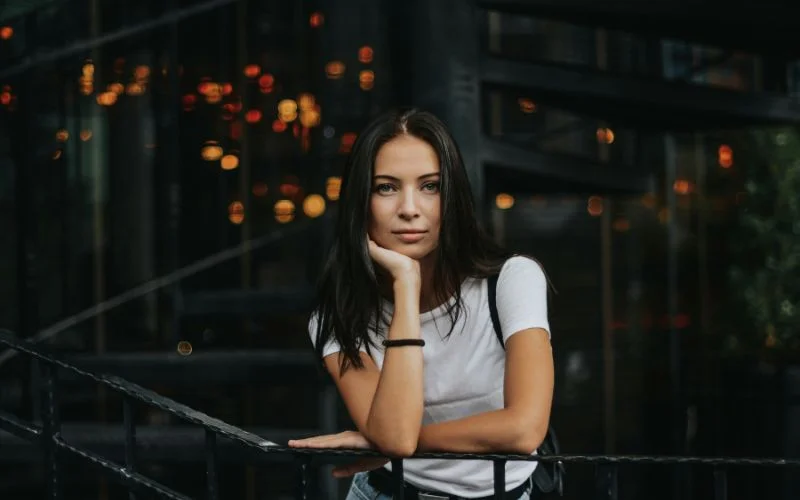On street/doc photographer’s website, Jason Henry writes that “Jason Henry likes the simple things,” stuff like “good coffee, floating in large bodies of water, and bombing hills on his skateboard.” You wouldn’t be able to tell from his photography. No, there’s hardly any idyllic fetishizing in his work — and if there is, it’s embedded deep within, perhaps found only in the centeredness of his compositions. Jason Henry is a voyeur. Life comes at him and Jason Henry photographs it. It’s that simple. Everything seems to fit in the right place and all of it is uncensored.
This unfiltered perspective allows his images to contain and meld different voices, ideas, and meanings. Some of his work can be challenging to interpret, some of it can hilarious, but every image has a distinct reverence for trying to understand the world’s paradoxes and contradictions. This honesty is the most obvious thing you can feel when looking at the work of Jason Henry. This could explain why his work has been featured by the New York Times, the Wall Street Journal, Vice, and the FADER, among others.
In this interview, Jason Henry explains how he got his start in photography, explains his approach to documentarian photography, and talks about his fondness for Florida.
Your photography is sometimes challenging. You like to focus on unusual or complicated subjects and personalities. How did you get your start? How would you describe your work?
I got my start in skateboard photography. I picked up a camera in high school and just made photos of my friends. At that time, I really wanted to become a photographer for skateboard magazines, so I tried to do that for a while until I went to college. I had scholarships and higher education was really important to my family, but I didn’t want to do something I didn’t feel passionate about for the rest of my life, so finding a major that allowed me to do photography was my only goal. I didn’t really identify with the theory based photography program at the arts college, so I sided with photojournalism. That shifted my interest to other things besides skateboarding. I’ve always been interested in nuances of culture and society, so I try to seek out those situations that I don’t understand from my own worldview and the camera allows me the ability to understand.
Florida figures heavily in your work. What do you wish to convey to the world about that area?
I don’t wish to convey, rather provide perspective on something that someone might not have seen, knew existed, etc. Florida’s where I was born and raised, where I went to school and where my family still lives. My parents were military brats that jumped around growing up, and they didn’t want that for their children, so they built a house in a booming suburban community in South Florida in 1979 and haven’t moved since. Because of that, I’ve been able to see the physical and cultural transformations of the small street I grew up on, the town, the beaches, the region, the State itself, and so on. I’m very interested in Florida and its residents, but I had to step away for a while because I was overlooking important cultural cues because they were what I considered normal. I was figuratively going blind, so I moved to San Francisco to reinvigorate my eyes. Florida is still a very special place to me; I hope to eventually return to work on a long-form document of the State, its people, their cultures, and the land they call home.
You’ve also completed editorial and commercial work with some high profiled clients. What do you think these clients are looking for in a photographer’s portfolio/skill set?
I don’t think I’m qualified to answer on behalf of anyone I’ve worked for. But, if I were an editor with the ability to commission work, there’s a laundry list of photographers I’d love to work with. Above all, said photographers convey a strong sense of style, aesthetic, vision, voice, or whatever you want to call it. That provides perspective in to who you are as a person.
Your street photography is complex. Many of your images require second and third viewings to fully grasp what’s being communicated. What goes through your mind when you’re out on the street shooting? What interests you compositionally?
To me documentary photography is a reaction. I like to empty my mind while I’m out and about and just be observant of that which is in front of me. I rarely go out looking for something in particular; rather I try to keep my eyes open for contradictions and paradoxes. I used to rely on visual aesthetics, trying to make pretty pictures I guess, but now I’m much more interested in the cultural relevance of the content more so than the aesthetic of the image. I used to get caught up in layering and other compositional techniques, but I’ve given in to the fact that I’m a centrist. I like things centered and I’m ok with that.
I Drink Alone seems like a visual nod to Bukowski. What was your aim with this project? How did you gain so much access to that man’s life?
I was attending a fellowship for young journalists at the Poynter Institute in St. Petersburg, Fla. Myself and 39 other young bucks had to find and document a story in an assigned neighborhood of the community within a two-week period. I wanted to photograph an issue that was taboo, but could provoke a feeling that every human could relate to. The issue of loneliness in the elderly as a result of the changing traditional family models intrigued me. Loneliness is something most humans experience throughout their lives, for one reason or another. Also the idea of the family unit moving further from each other and abandoning traditional roles of tight knit families taking care of their elders, etc. I ended up meeting Elder, who appears in the photos, sitting alone at a bar. We talked and he explained that he lived on a sailboat, alone. I explained what I was doing and asked if I could hang out for a few days. He obliged and I made these photographs. He became an alcoholic after his wife died of cancer years before and he lost contact with the rest of his family. His license was revoked after an untold number of DUI’s and he was living by himself on a friend’s sailboat in a their backyard. I think he was happy to have the company.
Like much of your photography, many of the images in that series feature reflections and understated humor. How do you get your subjects to open up around your camera?
As a tangent, I don’t think referring to people as subjects is ok. I feel it’s demeaning to the individual. Instead I prefer to refer to the people I photograph as just that, people. Almost all the photographs I make are documentary in nature. It’s not my intention to influence the behavior or decision making of the people around me, rather be a voyeur and document what happens naturally around me. Sometimes life is funny, and sometimes that comes through in an image. Humor can be very subjective.
A lot of your work seems run-and-gun, but with all the humor, there has to be some planning. Could you explain your pre-production process?
I don’t really have a pre-production process, except maybe consuming imagery. I follow a lot of photographers work and spend a large amount of time looking at work. That inspiration for me is important. For others it can be a trap to regurgitating trends. Looking at different work to helps me become more visually literate, so that when a photograph does happen in the world, I’m more prepared to recognize it. It’s a combination of understanding certain universal tenets of visual communication that make an image successful, and adding that dose of personal touch that makes it unique to the photographer. When I’m photographing for myself, I like to wander and bounce around like a pinball.
Finally, how would you describe a perfect photograph? What’s in it? Which mood?
I don’t think there is such as thing. If a visual communicator feels that an image that they created is sincere and that they can stand behind it and say, “I feel this this image is successful in its intention and gesture,” I think that’s all you can ask for.
Be sure to check out all the work of Jason Henry on his website and blog!
